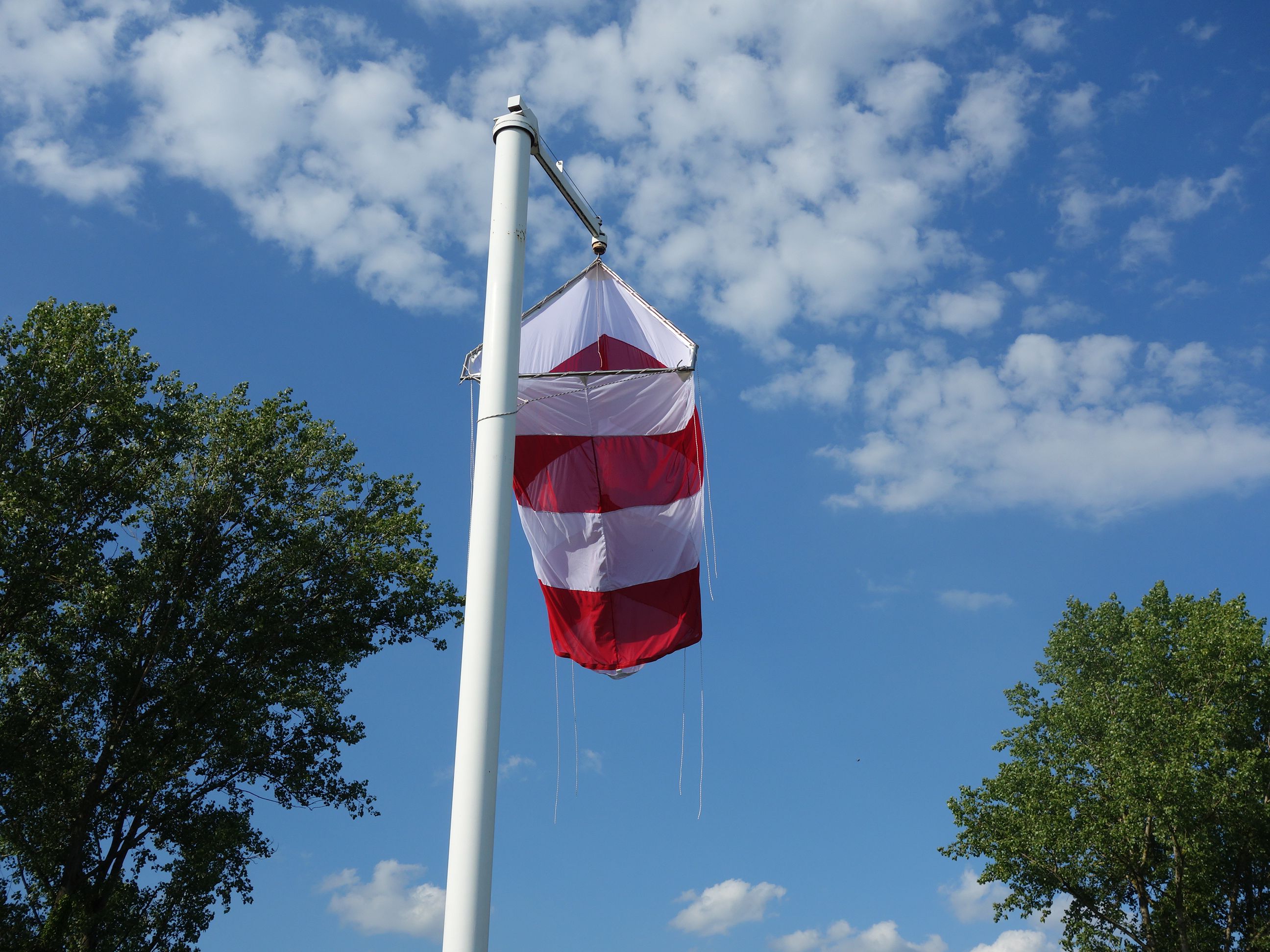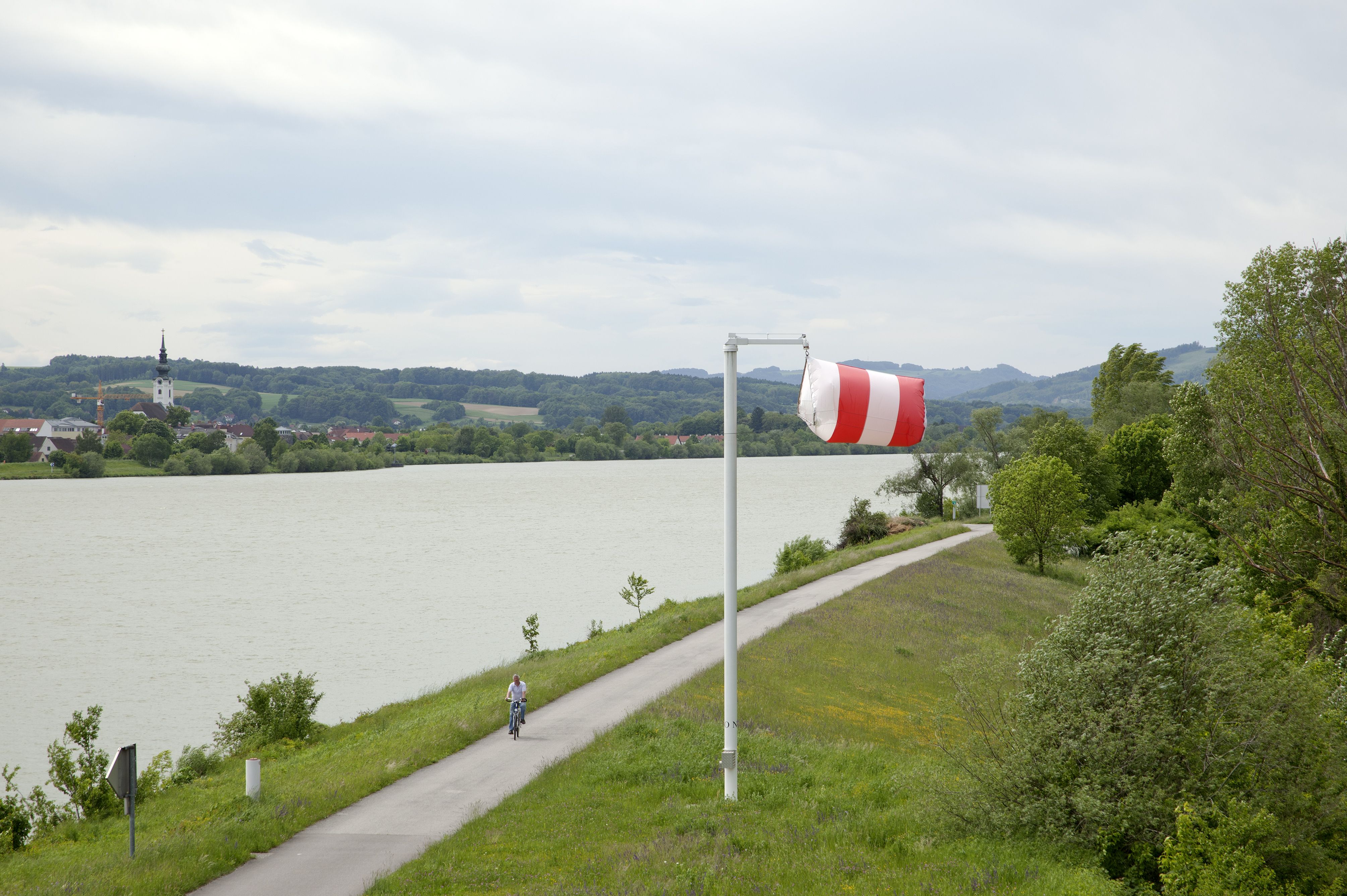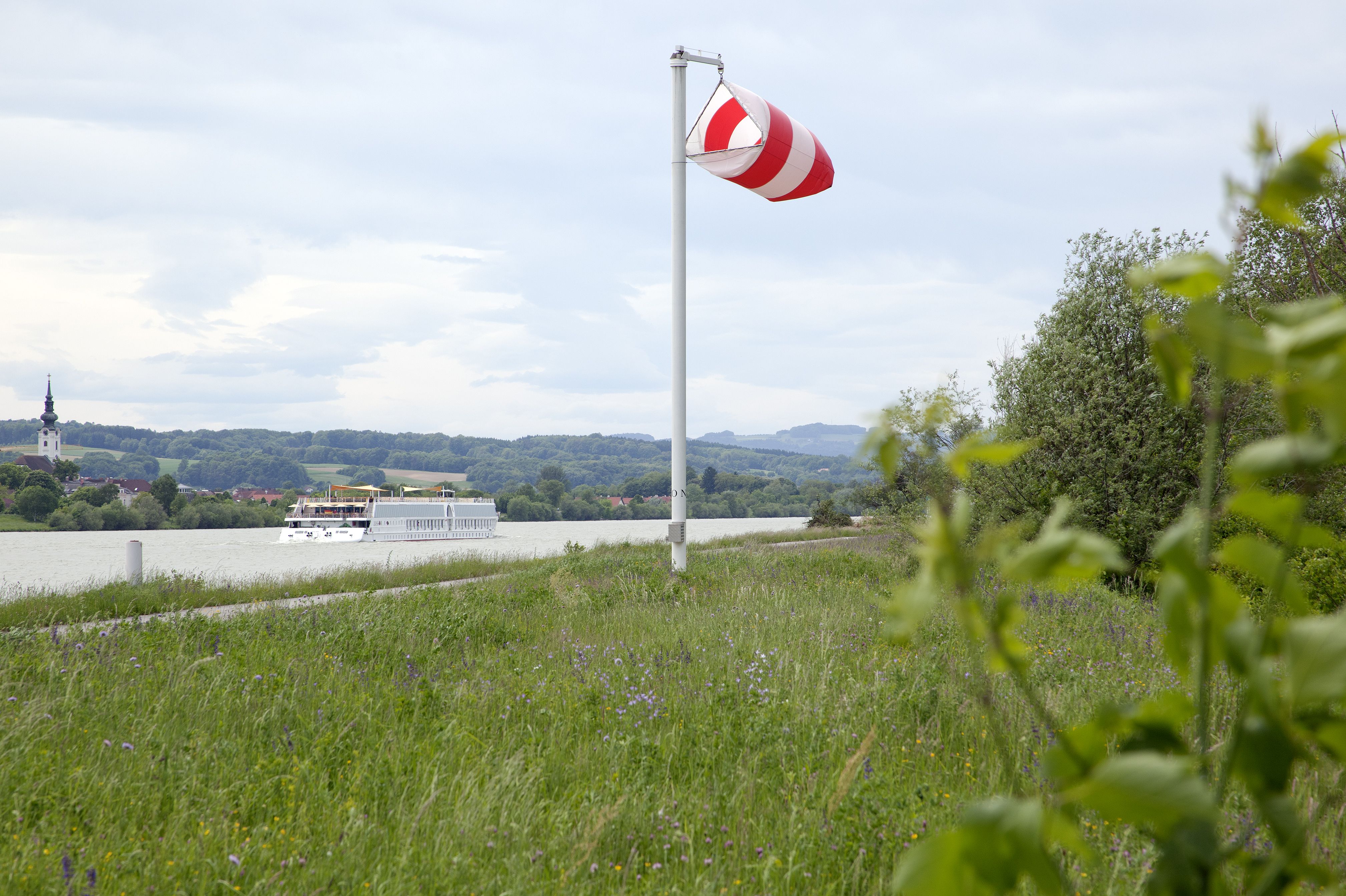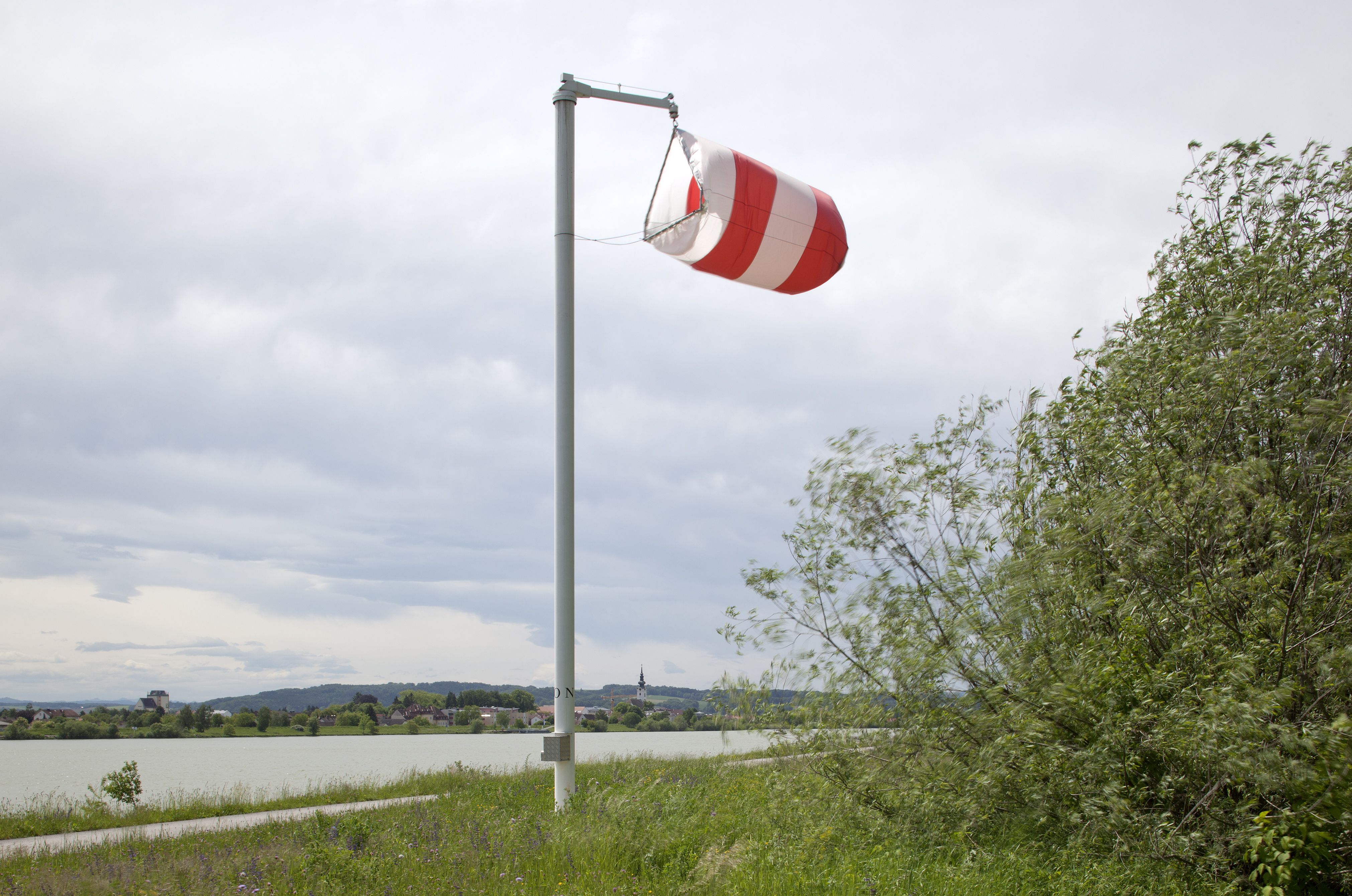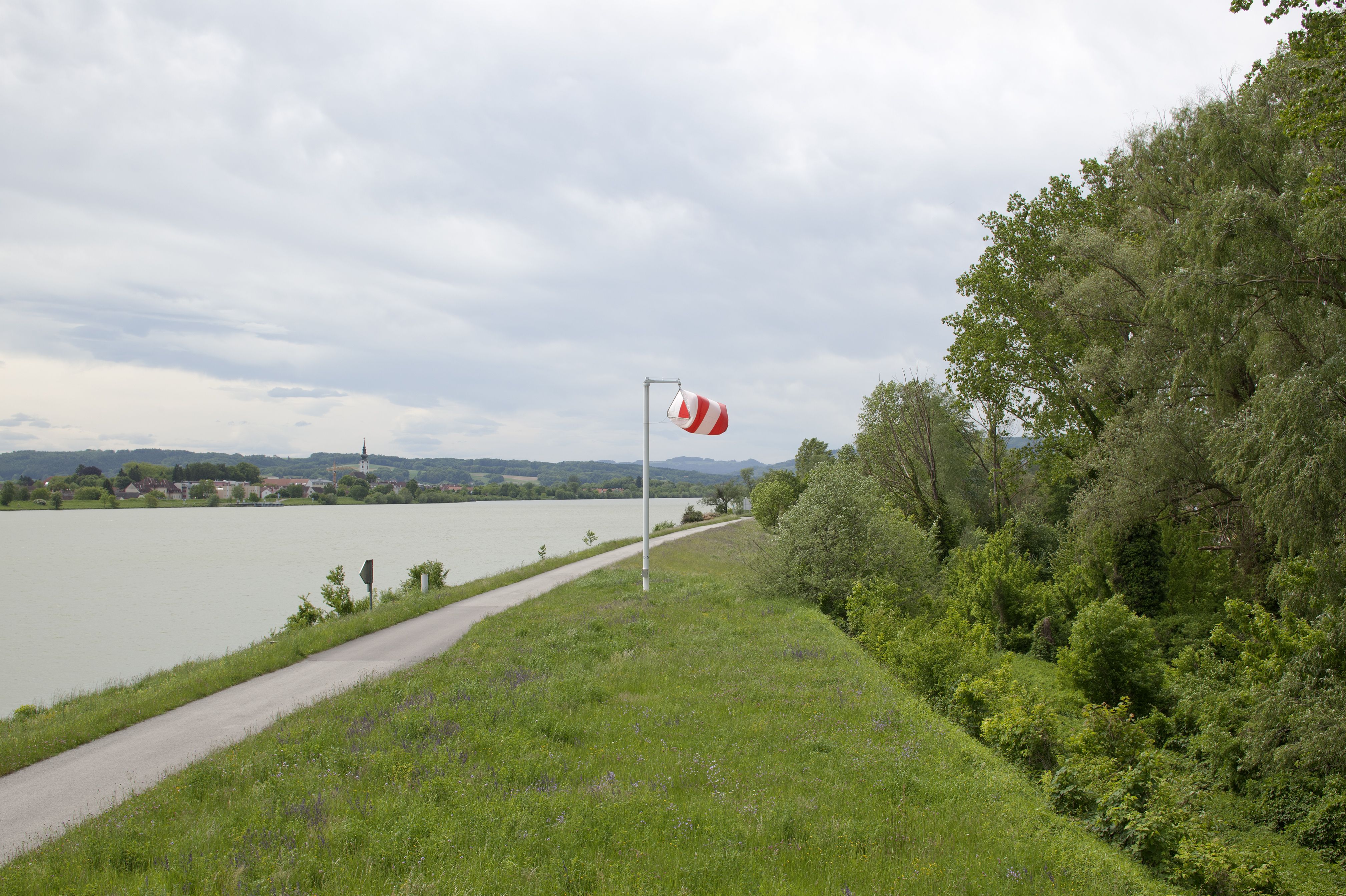Katrin Hornek
:
Camp NOSW
Back
Information
With her installation Camp NOSW located near the bridge over the Danube in Klein-Pöchlarn, Katrin Hornek addresses current forms of mobility and of staying in one place for a while – with connotations ranging from the precarious to the romantic – as well as their different social and political backgrounds. The "camp" in the title refers to sleeping in a tent, while "NOSW" stands for the four cardinal directions (North, East, South and West).
With her installation Camp NOSW located near the bridge over the Danube in Klein-Pöchlarn, Katrin Hornek addresses current forms of mobility and of staying in one place for a while – with connotations ranging from the precarious to the romantic – as well as their different social and political backgrounds. Hinting at a complex web of associations, the “camp” in the title refers to sleeping in a tent, while "NOSW" stands for the four cardinal directions (North, East, South and West). Next to the Donaulände bike path, the artist erected a pole with the four letters N, O, S, and W attached. At the top of the pole she hung a two-person tent that can rotate 360 degrees, depending on the direction of the wind. If there is a strong wind, it fills with air, and if there is little or no wind, it sags. In its materiality, its physical behavior, and with its red and white stripes, the tent reminds us of the windsocks used in aviation and road traffic that indicate the direction and the approximate force of the wind – such a windsock can also be found on the side of the bridge. The installation can also be seen as a symbol for a tent camp site. The artist has said: "Disaster relief camps, camping vacations, refugee camps, summer camps, survival camps, festival camps, scout camps, terrorist camps, reception camps, research camps – camps are strongly defined by time; they are located at the intersection between leaving and arriving, between sedentariness and mobility. They are often places of extraordinary circumstances that are either positive or negative. They can be found at the margins, between political, military and romantic extremes." As part of the local initiative "Orte zum Verweilen" (places to stay or rest for a while), the artist chose the bridge over the Danube as a location for her installation for a specific reason: "A wide range of speeds and uses are brought together in this transitory place located between various routes of transportation and recreation – from the car bridge to walkways and bike paths, including a spiral bike ramp." She approached this artistic issue not only from a documentary point of view, but also with a dialectics that is both analytical and synthetic. She thus turned the local theme of Verweilen, which means to stay or rest somewhere for a while, upside down – examining it from all sides and putting it in the context of current socio-political questions of global order.
Katrin Hornek received a degree in performative art and sculpture at the Academy of Fine Arts Vienna in 2008. She belongs to a younger generation of artists who let their art works dictate the most suitable artistic medium. Hornek looks for "sensitive" spots, gaps and hinges the system. She says she approaches these "structures (often architectural) based on different materials as projection surfaces", putting them in contexts of natural and cultural science. For her project in Klein-Pöchlarn, the artist links the traffic situation on the bridge with the wind – a natural motor that transforms the windsock into a metaphor. Depending on our perspective, we can interpret this as poetic, ironic or critical of the system.
(C.Offergeld)
Images (5)
